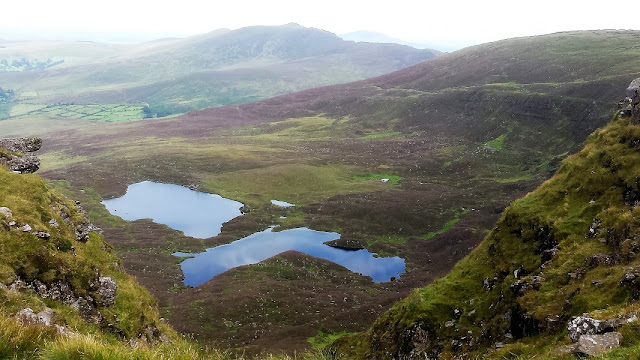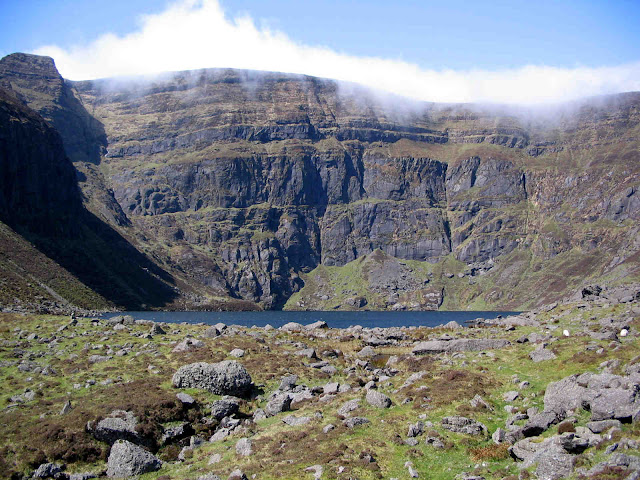The origin of the word Comeraghs
Where does the name “Comeraghs” come from? When did it begin to be used widely as the placename for the mountains of north Waterford? Now there be two 64,000 dollar questions! Let`s look at the two main ideas out there as to the origin of the name. |
| Com na Locha in the Nire |
The main language spoken in Ireland from late prehistoric times down to the late 19th century was Irish or Gaelic. This of course is a Celtic language and linguists tell us that the Celts were fond of naming places around them with words from the natural world. The word “com” in Irish means marshy hollow (often created by glaciers) and since there are at least fourteen marshy hollows hewn into the mountains of north Waterford, perhaps the name “Comeraghs” evolved from this Celtic/Gaelic root word. The Welsh (also Celtic) word for a glacial hollow is “cwm”, very similar to the Irish one. Given that many Déisi emigrated from Waterford to south Wales in the early centuries A.D., and that there was much trade between the two areas at the time, some historians suggest that the present name of the main mountains of the Déise may have evolved at this time and may be very much connected to the word used for marshy hollow on both sides of the Irish Sea.
Other historians have a different take on this however. The pre-Viking name for Waterford harbour was “Cumar na dtrí nUiscí” – the confluence or meeting of the three waters, namely the rivers Suir, Nore and Barrow. Father Geoffrey Keating, 17th century historian, believed that a variation of this name went back to pre-Christian times. He and other early historians tell us that the people who lived in these valleys were called “Cumaraigh” (plural of “Cumarach”) over a thousand years ago. Most historians now believe that the origin of the name “Comeraghs” may have originated from an ancient name for the people who lived along the banks of the Suir and nothing to do with the geographical feature - “com”, or the Welsh connection.
 |
| Cumar na dTrí nUiscí - Waterford Harbour |
When was the name first applied?
The use of the name seems to go back to at least pre-Viking times then, but when was it applied to the mountains proper? Variations of the name have surfaced in historic papers from different eras and used to describe locations close to the mountains. The Civil or “Down” Survey of Cromwellian times shows the name “Comragh”, while a description of a battle in 1643 in the Kilrossanty area mentions “Comroe Castle”. Further back, in the early 15th century, historians tell us that dispossessed O`Briens from Thomond were granted land by the Earl of Desmond in “Cummeragh” near Kilrossanty. But when exactly was the name “Comeraghs” put on the mountains? Níl a fhios agam! Finally, which of the two popular theories explaining the origin of the word “Comeraghs” do you think is the correct one? On the face of it we might say the second one because it seems to be more definite and based on historic record, but then weren`t the Celts living in the area before the historians got to write about it? Who knows!



Comments
Post a Comment